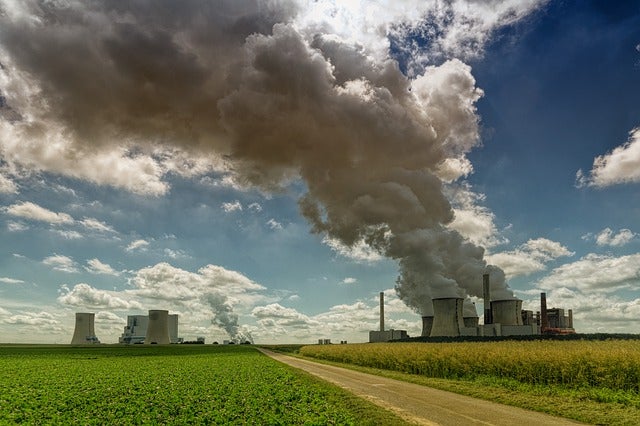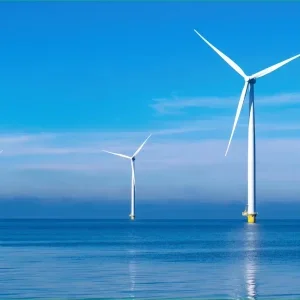
Duke Energy today announced an updated climate strategy with a new goal of net-zero carbon emissions from electric generation by midcentury. The company also is accelerating its near-term goal by cutting its carbon dioxide emissions by half or more from 2005 levels by 2030.
This follows strong progress the company has made in reducing carbon emissions 31% since 2005. The reduction Duke Energy has already achieved meets or exceeds the standards of the former Clean Power Plan and the 2025 U.S. commitment to the Paris Agreement.
The company’s 2017 goal to reduce carbon emissions 40% by 2030 was one of the industry’s most ambitious at the time. Since then, sustained, low natural gas prices and declining costs for renewables and storage have allowed the company to accelerate that goal to at least 50% by 2030.
“We are making a cleaner energy future a reality for our customers and communities,” said Lynn Good, chairman, president and CEO. “A diverse mix of renewables, nuclear, natural gas, hydro and energy efficiency are all part of this vision, and we’ll take advantage of economical solutions to continue that progress. In the longer-term, innovation and new technologies will be critical to a net-zero carbon future.”
The company’s net-zero goal represents one of the most significant commitments to reducing carbon dioxide emissions in the U.S. power sector. Achieving these goals requires a thoughtful approach that pairs today’s technologies with the research and development needed for tomorrow. The company expects it can achieve significant reductions in carbon emissions by 2050 with the technology that exists today.
“Getting to net-zero carbon emissions, while ensuring energy remains reliable and affordable, will require new technologies. That’s the very reason we need to act now,” Good said. “We must continue leveraging today’s technologies while sustaining investment in innovation for this vision to become reality.”
Duke Energy’s path to a net-zero carbon future
Transforming our energy infrastructure is no small task, and these steps will enable the appropriate balance between pace and cost, reliability and innovation.
Collaborate and align with our states and stakeholders as we transform. The steps and timeline for this transition will be unique in each state we serve, and we’ll collaborate with regulators, customers and other stakeholders to determine the right path.
Accelerate our transition to cleaner energy solutions. We’re planning to at least double our portfolio of solar, wind and other renewables by 2025. We’ll continue deploying low-cost natural gas to speed the transition from coal and maintain reliability. New natural gas infrastructure will be required to fuel this transition and balance renewables. We’ll continue expanding energy storage, energy efficiency and electric vehicle infrastructure.
Continue to operate our existing carbon-free technologies, including nuclear and renewables. Our nuclear fleet’s nearly 11,000 megawatts of carbon-free generation in the Carolinas is central to our ability to meet these goals. That’s enough energy to serve 7 million homes.
Modernize our electric grid. The company is investing in a multiyear effort to create a smarter and more resilient grid that can protect against extreme weather and cyber or physical attacks. These grid improvements also support adding more renewables, while avoiding outages and providing customers more control over their energy use.
Advocate for sound public policy that advances technology and innovation. This includes advanced renewable energy, longer-lasting storage, new nuclear technologies, low- and zero-carbon fuels and effective ways to capture carbon emissions. The company also will support permitting reforms that will enable new technologies to be deployed.
For details on the company’s comprehensive approach to tackling climate change through adaptation, mitigation and innovation, visit duke-energy.com/climate.
Duke Energy customers benefit from a diverse mix of energy sources that has kept electricity prices well below the national average. This has allowed the company to retire 49 coal-fired units totaling 6,190 megawatts since 2010, replacing those with flexible natural gas and growing renewables.
The company will work with regulators and stakeholders in the states it serves and will outline proposed steps in the resource plans it files. Phasing out remaining coal generation will occur gradually and on different timelines in the states Duke Energy serves to protect customer rates and reliability.
Climate and energy leaders expressed their support for Duke Energy’s updated goals:
“The Clean Air Task Force congratulates Duke Energy for its significant leadership as the nation’s largest electric company in making a science-based commitment to eliminating its net carbon emissions by midcentury. With Duke’s announcement, electricity providers representing more than 30% of U.S. electric sales are now committed by pledge or law to fully phasing out climate-warming emissions. We look forward to working with Duke to advance the technology and policies needed to make this transition swift and affordable.” — Armond Cohen, executive director of Clean Air Task Force
“Over the past 12 months, we’ve witnessed rapid growth in the number of U.S. electric utilities making commitments to significant carbon-reduction goals. We congratulate Duke Energy for their announcement joining this group. As one of the nation’s largest utilities, their commitment will have a meaningful impact on efforts to achieve a carbon-free energy system.” — Julia Hamm, president and CEO of the Smart Electric Power Alliance
“We applaud Duke Energy’s plan to rapidly expand clean energy technology with an eye toward net-zero carbon emissions by 2050. Coordinated investments made today in low-cost renewable energy sources, electric grid modernization, energy storage and electric vehicle charging infrastructure will lead to a cleaner and more cost-effective electricity supply for American consumers.” — Tom Kiernan, CEO of the American Wind Energy Association
“Duke Energy’s leadership is taking the United States a great step forward. To reach our midcentury goals to reduce greenhouse gas emissions and avoid the worst effects of climate change, it’s critical that electricity providers lead the way. Vehicle electrification and heating and cooling in the residential, commercial and industrial sectors all depend on a decarbonized power source. When one of the largest energy holdings companies in the United States and the largest by number of customers served says it’s going net zero, the world takes notice.” — Bob Perciasepe, president of Center for Climate and Energy Solutions
“With their bold commitment to net-zero carbon emissions by 2050, Duke Energy continues to lead in American power. Market signals like these demonstrate that transitioning to clean energy can be as positive for affordability and reliability as it is for addressing climate change. ClearPath applauds Duke Energy’s plan to lean in on energy innovation to create the new technologies needed to achieve their goal. We look forward to working alongside Duke Energy to encourage federal investments in clean technology. Innovations in advanced nuclear, carbon capture for coal and gas and battery storage will ensure this clean path is affordable for consumers.” — Rich Powell, executive director of ClearPath
“Kudos to Duke Energy for its new plan to deploy more renewable power and accelerate its carbon reduction goals. This is an important step toward the transition to a carbon-free electricity grid, which is at the heart of any effective climate solution.” — Gregory Wetstone, president and CEO of the American Council on Renewable Energy






